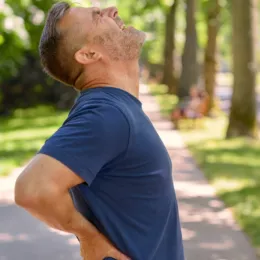The potential benefits and risks of cannabis

Esteban Lopez - unsplash.com.
What is cannabis?
“Ten years ago, when you referred to cannabis, you were talking about dried plant material that people smoked,” says Ryan Vandrey, associate professor of psychiatry and behavioral sciences at the Johns Hopkins School of Medicine.
“Now, cannabis—which refers to marijuana and hemp—is a blanket term that could also mean hemp oil, topical creams, CBD products, high-THC concentrates that are smoked, vaporized, or orally ingested, and more.”
And confusion abounds. “People either demonize cannabis or make it sound like the most amazing thing,” says Vandrey.
The truth likely falls somewhere in the middle.
“Maybe cannabis will be useful to some people, but it will be disappointing to most,” says Daniele Piomelli, professor of anatomy and neurobiology at the University of California, Irvine. “Cannabis will not be a panacea. Nor will it be as dangerous as some people think.”
Cannabis has few established medical benefits
In 2017, a National Academy of Medicine panel drew roughly 100 conclusions on the health effects of cannabis after reviewing about 10,000 study abstracts. Only three benefits stood out:
- “We found conclusive evidence that cannabis can reduce nausea and vomiting induced by chemotherapy,” says Piomelli, who served on the panel.
- There is “substantial” evidence that cannabis modestly reduces self-reported involuntary muscle contractions in people with multiple sclerosis.
- There is “substantial” evidence that cannabis modestly reduces chronic pain. “It’s not as strong as a narcotic pain reliever like an opiate,” Piomelli notes. “So it’s not as effective, but it may be more usable long term.”
As for most other health problems, few good studies have been done. (It's worth noting that there has been more research on the potential harms than the potential benefits of cannabis.)

But the list of cannabis’s benefits may never be long.
“In what other case do we have a single medicine that we use to treat 30 different health conditions?” says Vandrey.
In fact, the Food and Drug Administration has approved just three (synthetic) THC drugs—Marinol and Syndros (dronabinol) and Cesamet (nabilone)—to treat nausea and vomiting from chemotherapy.
But some states are far more enthusiastic. “In many, the list of conditions for which medical cannabis is authorized is very long,” says Piomelli.
“Out of those, we really have evidence for maybe one or two.”
Smoking marijuana can harm your lungs
“Smoking is probably the worst possible way of getting marijuana into your body,” notes Piomelli.
That’s because smoking marijuana produces many of the same harmful chemicals and carcinogens as smoking tobacco. Yet marijuana smokers don’t have a higher risk of lung cancer than non-smokers.
“That was one of the biggest surprises of the National Academy of Medicine report,” says Piomelli.
The dose may explain why. “Tobacco smokers might smoke 20 or 40 cigarettes a day,” notes Piomelli. “I’ve never heard of someone smoking 40 joints a day.”
But smoking marijuana does increase the risk of chronic bronchitis and worsens respiratory symptoms like coughing and wheezing, said the Academy.
Some small studies suggest that “vaping”—when marijuana is heated, not burned, and its vapors inhaled—may cause fewer respiratory symptoms. But no long-term studies have looked.
Cannabis ups your risk of a car crash
“We know from good, controlled research studies that cannabis impairs driving,” says Vandrey. But if a driver is in a crash and tests positive for THC, “we have no good way to know whether that person was intoxicated or under the influence at the time of the accident.”
That’s because THC can be detected in blood long after the user is no longer impaired.
What’s more, blood levels of THC increase rapidly after you’ve inhaled marijuana, but they stay low—below the limit that many state tests can detect—after you’ve had an edible (a food or drink that contains THC).
“Unlike alcohol, blood levels of THC do not reflect intoxication,” says Piomelli.
Cannabis has other risks
“Cannabis has the same types of effects on the reward pathway in the brain as alcohol, cocaine, opioids, and nicotine,” says Vandrey.
But the risk of cannabis abuse is fairly low. “Most people who use cannabis won’t have issues with it,” Vandrey notes. “The current estimate is that about 10 percent of people who try it will end up having problems.” (And by problems, he means cannabis use disorder, which includes both cannabis abuse to dependence.)
That’s concerning, but it’s less than the roughly 20 percent of drinkers or 65 percent of nicotine users who become dependent.
The Academy also found “substantial” evidence that cannabis use may increase the risk of psychotic disorders like schizophrenia, with the highest risk among the most frequent users.
“Young adolescents also have a higher risk,” says Vandrey. “But a cause-and-effect relationship hasn’t been established for any group.” Still, he adds, “people with a family history of psychosis should avoid cannabis, especially products with high THC content.”
Photo: Esteban Lopez/unsplash.com.
Tags




